"The Legend of San San Ku was a practically unanimous choice as winner of the top award with its story of a Japanese legend. If the credits were to be removed from the beginning of this film, it would be hard to believe that it was not made in Japan. It was a very ambitious production for a crew of amateurs to undertake, and they came through with flying colors. Here's 20 minutes of Japan that is delightful to experience" PSA Journal, Oct. 1968, 48.
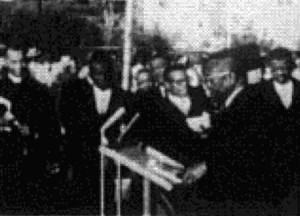
"A free and independent country with a form of government patterned after the U.S.A. located on the western part of Africa. Monrovia, its capital city, is modern and has an air of prosperity. There is an active program of new schools, improved teaching, road construction, agricultural development, and training of its defense army. Away from the city, the country is still a land of thatched roofs and scanty clothing, ritual and tribal dances. A fine documentary that tells us also of the economic growth of the country" PSA Journal, Oct. 1962, 33.
Imágenes del bosque / Images of the forest.
"A well done travelogue of Hawaii showing the sports the tourist usually sees, the profusion of flowers, etc." PSA Journal, Nov. 1956, 45.
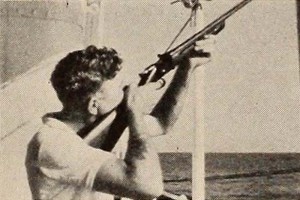
"Frances Christeson, experienced cinematographer and artist of cine devices, gives us in Log of the Timber Rush the movie diary of a holiday voyage. That the freighter, in which she had booked passage, stripped its gears and was stalled somewhere in the Pacific Ocean, well off the coast of Mexico, upset her film plan but did not stop her. It became part of an amazing personal and movie making experience. But before the misfortune at sea and the long delay of weeks, waiting for help and repairs. Miss Christeson had filmed the loading of the Timber Rush with affectionate attention to detail and the use of fascinating cine symbols. She also had captured sequences of gorgeous quality, framed through ship's gear and depicting the beautiful, lazy clouds of the tropics and the life aboard the vessel. When the gears were stripped and the long period of inaction came, the camerawoman had, as she puts it, "the job of filming nothing happening." She does that as well as possible, and the result is a delightful sea picture marred only by the doldrums of fate." Movie Makers, Dec. 1938, 619.
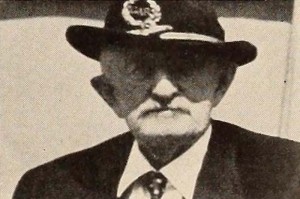
"Charles O. Barr, jr., in Long Remember, has done an extremely difficult thing admirably. This is a Kodachrome record of the recent last meeting of Union and Confederate veterans of the American Civil War on the battlefield of Gettysburg, in Pennsylvania. Because the persons of chief interest, the veterans themselves, were unable to contribute motion to any real extent, Mr. Barr's problem was to avoid using movie footage for still photographs, and yet not to offer an incomplete record of the interesting and historically important gathering. Aided by title wordings that were both dignified and exciting, the maker of this film managed to give to it a sweep of action that, without them, would have bogged down badly. There was motion, of course, in the parades, but these, of themselves, would have been trite fare, had they not been related to the battlefield by shots of watching veterans and by a whole series of admirable angled shots of the statues and markers on Gettysburg field. It is noteworthy that what might have been the dull portions of the record — the construction, housing and victualing arrangements — were given very intelligent, brief handling." Movie Makers, Dec. 1938, 619-620.
"Edited film used by an amateur travel-lecturer documents travel in western and southwestern United States beginning at a rodeo in Phillipsburg, Kansas (trick riding, lassoing jack rabbits, roping calfs, wrestling steers, horse races, bucking broncos and bucking steers as well as scenes of an airplane flyover and of an airplane crashing which possibly was a stunt) and continuing to Black Hills, South Dakota (forest scenery and ca. 1927 construction of Mount Rushmore--blasting off cliff face, scaffolding, men working and completed monument). Shown are roadside scenery, railroad tracks, men cleaning railroad tracks with hose and tank on small train car on the way to an unidentified mountain fishing camp possibly in Colorado (canoeing, fishing in stream, and a smokehouse) and a mountain farm where colts are branded. Cog railway is taken up to Pike's Peak. Travels continue to to the Southwest (unidentified southwestern town possibly Santa Fe with adobe buildings and men and children in Mexican dress singing and playing guitar, American Indian dance performance indoors possibly Zuni, parade of American Indians in unidentified city perhaps Gallup and Navajo band. Scenes of the southwest continue with Navajo in Canyon de Chelly (hogans and herding sheep), prehistoric archaeological sites (Mesa Verde, Chaco Canyon another unidentified cliff dwelling possibly Montezuma's castle) and Taos Pueblo. Film records American Indian dances at a gathering of Indian tribes possibly at Gallup, intertribal horse races and women's tug-of-war. Hopi are shown dancing at Hopi. Also shown are Indian women (possibly Apache or Navajo) and children together and children in cradleboard and the Navajo reservation (hogans, women spinning and weaving under a ramada, herds of sheep and goats and "dipping sheep"). Natural wonders of Grand Canyon, Monument Valley and Rainbow Bridge National Monument are featured.Travel continues to Yellowstone National Park, California (scenery, black bears, hot springs and geysers) and onto the California coast possibly Monterey (seals on rocks). Also shown are an unidentified town with oil pumps and derricks and people waterskiing" via the Human Film Studies Archives, Smithsonian Museum.
"A visit in New York City but mostly in the spirit of its night life although we do see some of its people and sun-bathed architecture, all to the beat and narration of a Decca recording. The source of the picture material appears to be from magazines and other printed picture sources including some live (but static) posing. The use of camera movement and lens zooming conveys a feeling of motion and activity for an enjoyable visit in New York" PSA Journal, Oct. 1962, 35
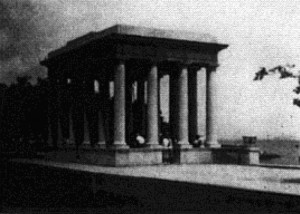
"Dr. Crane has a humorous approach for a visit to Boston, Lexington, Concord, Bunker Hill, Plymouth Rock, and the Mayflower II. Each sequence is preceded by a title quotation from a famous writer, to wit: "Boston.....the hub of the solar system" by Holmes; "The fate of the nation was riding that night" by Longfellow; and ends with "the unconquerable rectitude" of the Plymouth Maiden and Edward Crane" PSA Journal, Oct. 1961, 48-49.
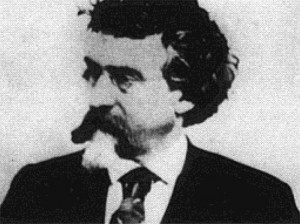
"Mathew Brady, the historian with a camera, photographed everyone of importance including Andrew Jackson, Henry Clay, Edgar Allen Poe, Abraham Lincoln, and many battle scenes of the Civil War. This motion picture is built entirely of photographs by Brady and his cameraman. Mr. Southard has used the zoom lens and lap dissolves to create a feeling of movement, supported by a good sound track" PSA Journal, Oct. 1961, 49.
Total Pages: 37